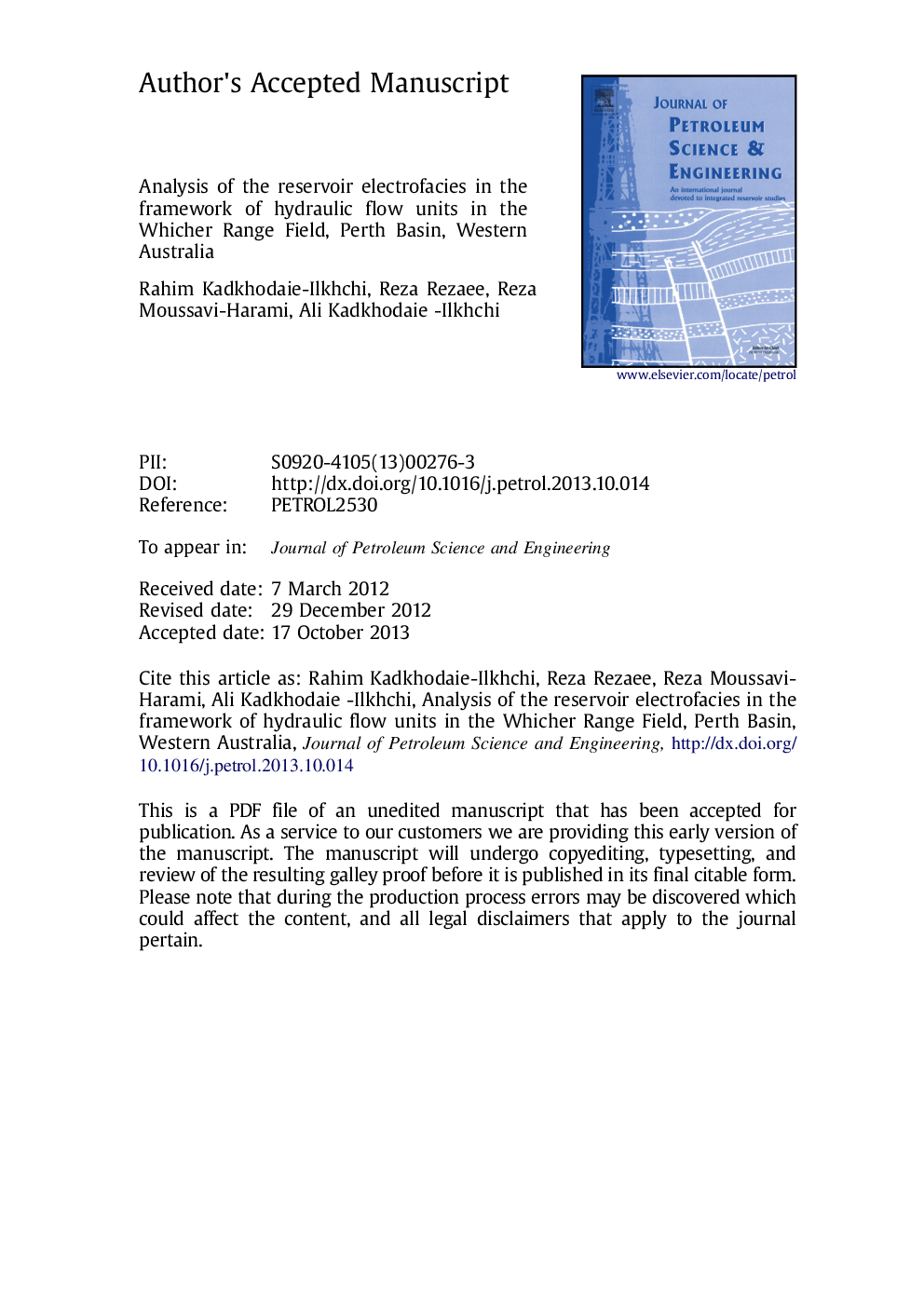| Article ID | Journal | Published Year | Pages | File Type |
|---|---|---|---|---|
| 1755083 | Journal of Petroleum Science and Engineering | 2013 | 54 Pages |
Abstract
In the second approach, four EFs were determined in relation to the petrophysical properties of sandy packages within the reservoir. In addition, in order to find a good connection between EFs and production zones within sandy packages, five hydraulic flow units (HFUs) were introduced. The results show that low quality HFUs (i.e. A, B and to some extent C) in all petrophysical electrofacies are mainly related to the fine grained facies deposited in low energy systems. In contrast, high quality HFUs (i.e. D and E) are related to the medium to coarse and very coarse grained facies, showing different petrophysical properties, although they have generally low permeability and they are considered as tight sands. Thus, three sand types, depending on the severity of diagenetic effects, known as type 1 or very tight sands, type 2 or tight sands and type 3 or sub-tight sands were differentiated. In comparison, sandstones in type 3 with higher porosity and permeability have the best reservoir quality, whereas low reservoir quality sandstones in type 1 have been strongly affected by diagenetic effects (quartz and clay cementation). The results indicate a good agreement between core derived rock types and log facies. Using the methodology described in this study, it is possible to track reservoir flow units from well log responses.
Related Topics
Physical Sciences and Engineering
Earth and Planetary Sciences
Economic Geology
Authors
Rahim Kadkhodaie-Ilkhchi, Reza Rezaee, Reza Moussavi-Harami, Ali Kadkhodaie -Ilkhchi,
